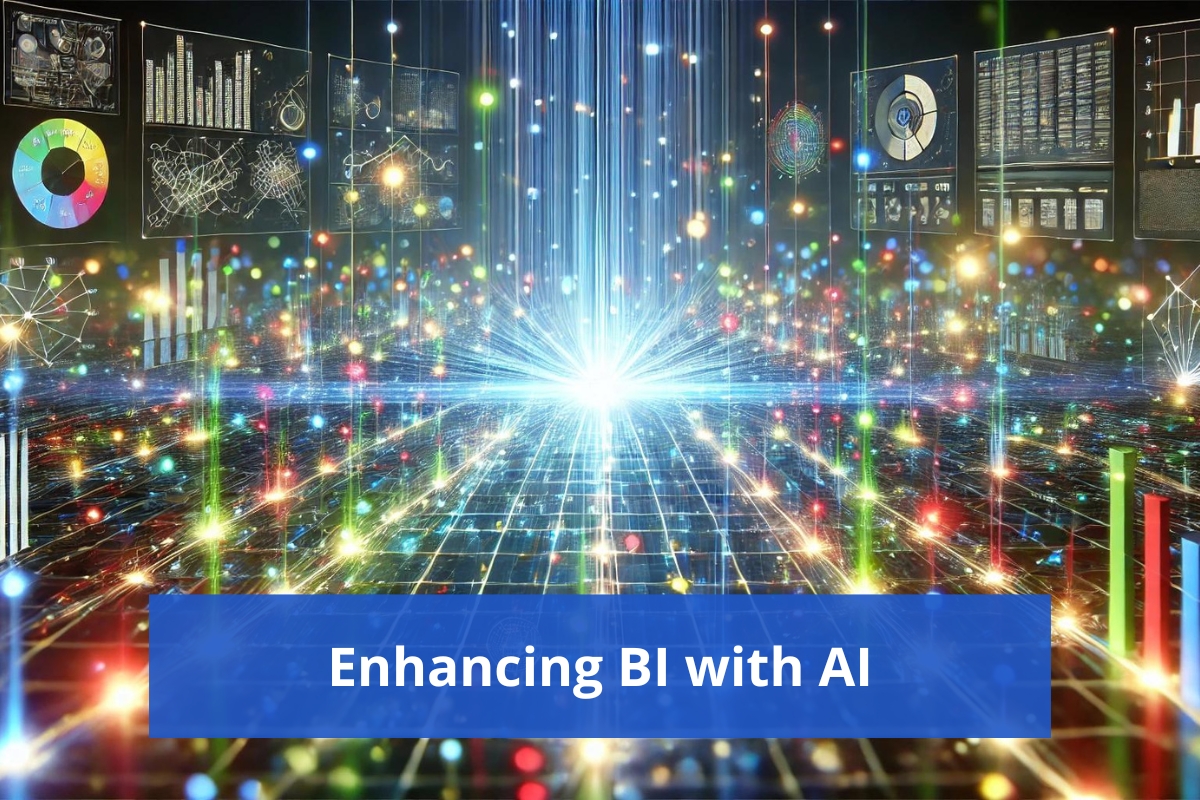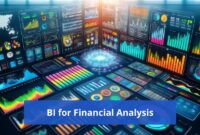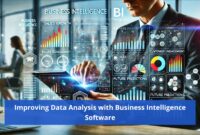Business intelligence has also turned out to be an indispensable tool in present day performance management and decision making. It entails the use of a certain number of tools and processes, to collect information, parse it and eventually, depict it with the view of enabling the decision making process of the organization.
Overview of BI reveals that in the past years, BI revolved around the use of data warehouses, wherein data was collected manually and sitemap was used which needed and to considerable extent contributed human effort for insights generation.
The BI system enables businesses to make the system present concrete benefits of large volumes of data. Whether it be sales figures over a period of time, customer dynamics or the effectiveness of marketing enacted BI lets every corporation properly manage using information.
However, the use of business intelligence does not come without challenges, one of its persistent limitations, data congestion has increase over the years, bringing about works with a need for an enhancement in the tools which leads to the development of simply a combination of BI to incorporate Artificial intelligence, software tools enhancement and augmentation.
Understanding Artificial Intelligence (AI)
Artificial Intelligence AI is the technology that involves the simulation of human intelligence processes by computer systems. AI seems to be the only solution capable of dealing with future masses of data. It is typically business and economic data analysis which is static, aiming for conservative business processes with a great many well defined parameters and rules.
AI has witnessed radical changes within the last ten years, bringing it into the list of business applications that include automated customer support and advanced analytics. The system’s ability to synthesize information from various datasets, discern patterns, and forecast events, makes it a core component of Business Intelligence. Companies that merge AI and BI technologies can take a quicker and profound turnaround in how they analyze data to their advantage.
BI and AI: The Bridges and Linkages
The intersection of artificial intelligence and business intelligence has yield to positive improvement in the use of business intelligence. Business intelligence processes as we know them tend to be retrospective, using past data to infer reasons as to why something occurred. AI tackles the problem differently; instead of looking to history, it seeks to understand the current state and the possible direction it may head towards.
AI also directly solves one of the main problems of BI—data overload. They require human input which is no longer desirable in the current times. In matters of business intelligence, this advancement means going through terabytes of data in a matter of seconds and pin pointing actionable points in the analysis which would ordinarily take months. Because of this rapid evolution and embrace of technology, we also no longer expect long wait periods for business responses to market changes and more intense competition.
AI-Driven BI: The Game Changer
AI-driven BI is not simply a betterment of the Bi strategy rather it is a disruptive technology. One of the main benefits of AI is that it makes generating insights into a task that can be delegated to machines. These systems do not only tell you what unfolded; rather, they explain what caused such unfoldings as well as future expectations. This higher level of comprehension will be vital in the aspect of strategy formulation.
There are several advantages to the AI-Driven BI, including:
Data Analysis Speed: An AI talks to the data in a language far removed from humans ever since the AI whipped up the world in analyses in split seconds with value-adding information.
Data Accuracy: An untouched AI determines the extent of such activities and draws conclusions that assimilate the concerns of analysts, making the rise of {\painters} clear-cut.
Cost Effectiveness: By making use of data visualization systems, BI processes which are menial can now be automated thus optimizing the manpower resources available.
Additionally, because of the predictive power of AI through Predictive Analytics a business is more proactive as opposed to being reactive to past events.
discuss several key AI technologies that are changing the status quo of business intelligence BI and increasing its applicability to companies of all sizes. Here are some of them:
Machine Learning (ML): In BI systems, this technology ensures that the system improves its forecasting by making use of the previous data. ML algorithms are especially efficient in pattern recognition from an extensive dataset where predictive analytics such as customer segmentation and sales forecasting can be applied.
Natural Language Processing (NLP): NLP is an interface that eliminates the need for technical expertise in order to retrieve data insights as BI interfaces allow end-users to communicate using natural language. If users want to know what products sold the most in the last month instead of writing a query, they can ask a system a question and receive an answer.
Visualizing Data with AI: All data under AK should be treated with respect as it has been gathered through various means, and when it comes to presenting everyday data, AI comes in handy by not only presenting the data but also aiding in making sense of the data. Decision-makers no longer just receive data but rather as AI integrates the data, it creates dashboards, charts and graphs automatically that outline vital areas of interest including trends.
Optimization of Business Intelligence Decisions with the Use of AI
The purpose of BI is the rational choice of the very course of the future development of the enterprise, and AI supplements this process by speeding up the acquisition of such insights more accurately. At the same time, with the help of AI, decision-makers get the information they need in real-time, which means they are able to respond appropriately to new opportunities or threats.
For instance, predictive models powered by AI can anticipate some market trends or customers’ behavior persuading businesses to change strategies in a timely manner. Further, AI enhances sound decision-making by minimizing the unavoidable human bias by presenting the information and insights in a more objective manner instead of relying on instincts.
What are The Impacts of AI on the Accuracy of Data in Business Intelligence Processes
BI’s objectives cannot be met without accuracy of data because the absence of data leads to bad decision making. In any case, the most sophisticated cutting-edge technology AI is and shall always for still improving data accuracy and pertaining mainly to cleansing.
AI is able to detect the errors/signet errors in datasets, namely discrepancies concerning structure, duplicate entries, and missing values, etc. Further, they do not only detect such inaccuracies but can also rectify them thereby improving the credibility of data that is analyzed. Businesses do not have to worry that the insights brought forward by BI tools are devoid of accuracy and that they employ AI in cleansing and validating the data.
Artificial Intelligence and its Clients on Information Management
Investing in business intelligence comes with its own set of challenges. With that said, organizations of today have the capability of investing in blockchain, mapping out realistic strategies, addressing data problems restructuring inherent practices – all factors designed to help retain competiveness. One of the most Advanced Features of Business Intelligence which is all-encompassing is the ability of the business to operate without any human labour cost.
This type of optimization cross data within multiple disciplines explore and discover entirely new opportunities. In most cases, data interpretation is performed by anomaly detection algorithms excluding human engagement.
Application of AI in Business Intelligence
AI is transforming business intelligence tools standalone. One of the main reasons western-oriented companies are still far away from a widespread adoption of BI is the, to put it mildly, technological sophistication of the tools. Artificial Intelligence helps in this aspect by facilitating the usage of more advanced systems and relieving the users of a lot of the heavy lifting tasks.
For instance, when opening analysis in AI BI dashboards, users can choose what analysis they are interested in and customize the dashboards to their preferences by displaying only the information for the users. This personalization leads to improved user experience as BI systems become easier to use for more people.
AI-Powered Predictive and Prescriptive Analytics
BI makes significant use of Artificial Intelligence in Predictive and prescriptive analytics. Indeed, Predictive Analytics tries to respond to the question of what might happen in the future, and Prescriptive Analytics — what actions to take in order to ensure this future.
For instance, a predictive model may anticipate another quarter with diminishing sales, whereas a prescriptive model can offer the company ways to minimize the sales downturn. Companies, using these capabilities of AI don’t just forecast what will occur, but take initiatives to ensure that it happens.
The Challenges of Implementing AI in BI
As aforementioned, there are extensive benefits of AI in BI, but there are also interesting issues concerning the implementation in organizations.
Data Privacy and Security Concern: Since AI will be processing sensitive information, it will be imperative to ensure that there are tight security measures in case of hacking incidents.
Skill Gap: Introducing AI in BI will require some relevant knowledge, most organizations don’t have this appetite.
Integration challenges: AI has to be incorporated with existing BI systems, which is difficult and expensive.
Overcoming AI Integration Challenges in BI
Companies looking to incorporate AI in BI should implement best practices. Among such practices are closing the skill gap through training, adopting appropriate AI tools, and having effective methods of collection of data to uphold data security.
It is also helpful to work with the AI experts or use the features of AI-driven BI tools to make the integration simpler. If done rightly, companies are likely to beat these obstacles and harness the benefaction that comes with the use of AI-powered BI.
AI in BI Use Cases In Different Industries
The application of AI in the business intelligence has the following benefits which is increasing popularity in different industries including;
Retail: Companies that do retail also benefit from the use of AI in making forecasts on consumer behaviour and in stock control.
Healthcare: In healthcare systems, AI has made it possible to come up with analysis of the patient information instantly which increases the quality of patient care.
Financial Services: In the financial realm, AI has improved fraud prevention and detection as well customer analysis and risk management.
These applications in the real world highlight how AI is creating solutions and innovations in various industries.
Future Trends: BI and AI Integration
On a good outlook, a more further ways of combining AI with BI will emerge. Emerging technologies such as Reinforcement Learning and Cognitive AI will further complement the BI instruments by making them more intelligent and autonomous making their own decisions.
As it stands today, and in the near future, the BI sector will be quite different than what it is today: all analytics will be automated and it will not only be AI-driven but AI-developed innovations as well.
Final Thoughts
To recap, AI is changing the business intelligence space in high accuracy, effectiveness, and speed. Implementation of AI support in BI processes enables better business decisions and higher quality of data while simplifying a number of operations that used to be performed manually. As organizations continue implementing an AI-led BI strategy, they would be able to better operate in a world that is increasingly becoming more driven by data.Working hand-in-hand with AI is the next evolution of BI. Adoption of this technology will give organizations a considerable edge over others in the coming years.



